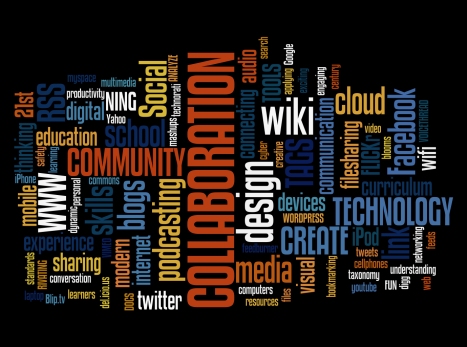In this day and age, technology has moved kids to look for a different way of working, a different way of learning. In fact, it may not just be kids. Do you belong to a social networking site like FaceBook? Chances are that you do. If not, you are at least aware of it.
Why have these types of sites become popular? It is in our nature to want to be with people. Even more so, we love to collaborate. Never in history has it been easier to collaborate – the barriers to communication have come tumbling down with new technologies like email (not so new), instant messaging (not so new), FaceBook and Google Docs.
I have set up Google Docs for my classes. I send out Google Forms to my students to gather information on them at the very beginning of the semester. By emailing a link to a form I have created, a student simply fills in the information on their own time and the information immediately gets tabulated in a spreadsheet for me to manipulate. I can then sort the information in the spreadsheet as I please. For example, in my music classes, after polling the whole class (a senior class) about their voice type, I can then pool together using Google Spreadsheets (or download it to my program of choice, Numbers by Apple) all of my tenors, sopranos, altos and basses. Even more impressive, is that I have all of their musical biographies in one location – I have saved paper and time having to go through each sheet.
This isn’t the only good thing about this process however. We will now start collaborating together (like a Wiki) using Google docs. Students will share documents for collaborations (i.e. scripts or storyboards for their video projects) using Google Docs. They can work on them ANYTIME and ANYWHERE.
In my experience, students want to collaborate. I think we need to rethink what “cheating” is because of this. I know this could become a hot topic but what if we designed more projects that had students collaborating together and sharing their knowledge and research in order to produce something even more powerful. Traditionally, we will tell our students that they must work on this on their own. But is this realistic? Do you belong to FaceBook, I ask again? Why? You like to share with others perhaps.
If we shift our thinking that memorization of information is the most important of all to a mindset that helps students find the information they need (look at the amount of websites there are online now), we will begin to design projects where it does not really matter if they share knowledge. Together, students can then use their higher order thinking skills (Blooms Taxonomy) to delve deeper into their learning and think more critically about what we are asking them to do. They will retain the new learning more easily and will be challenged along the way.
The current generation of students is a collaborative one. We need to help them with these skills. It will be crucial for the future as they become our business, political and educational leaders of the future.
If you are interested even more, here is an example interview with a teacher in the United States who has some interesting thoughts along these lines (especially the cheating). Have a look!
Steve Maher
Filed under: Comment, Resources, Tips | Tagged: cheating, collaboration, what is cheating | 2 Comments »



Educational Technology doesn’t work (Not my title)
I found this excellent entry on the GenYes Blog. I love the author’s reasoning behind why this title / subject is simply not correct. Have a read!
Filed under: Comment, Resources | Leave a comment »